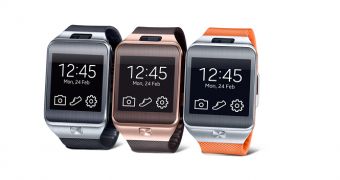If you noticed a trend these days, it involves smartwatches. Everybody is talking about them and a lot of companies are launching products from this category.
But the bizarre thing is that sales don’t show the same enthusiasm coming from the consumers. Sure, the market has increased since the advent of the Samsung Galaxy Gear, when smartwatches were still pretty much unknown as a product niche, but let’s face it, the growth hasn't been all that explosive, as the media seems to point out.
So the question arises, is the mighty Silicon Valley deluding itself into thinking smartwatches are going to be the next best thing in tech? Or are they trying to cue us into believing that for their own dark pleasures?
New York Magazine’s Kevvin Roose tried answering these very questions by subjecting himself to an experiment. Don’t fret, there wasn't any pain involved except maybe some mental fatigue at some point.
He tried wearing two different smartwatches all day, every day for a week, and in the end found these products to bring nothing to his overall wellbeing.
Roose humorously walks us through his experience with the devices. We told you that smartwatches were more socially acceptable than wearables such as the Google Glass, but throughout the week, Roose got mocked a little bit, being called “Inspector Gadget” twice.
His watch also went through a near death experience involving some spray-on sunblock. But the funniest part is related to the most important feat of a smartwatch. He writes he felt his arm vibrate so many times, he ended up treating it as a phantom limb.
The biggest problem Roose identified is that smartwatches basically don’t do anything that the smartphone can’t. Yes, we’re being told it’s more comfortable not to reach for your handheld unit while in the crowded metro or while in a meeting, but no one will die if you don’t answer a text immediately after you've received it.
Roose worked with the Samsung Gear 2 which runs Tizen, so it doesn't bring forth the Google Now functionality, which can be considered one of the most useful functionalities of Android Wear smartwatches.
On top of that, it doesn't help that smartwatches are intimately connected to a smartphone and they can’t work as standalone products. Not for now, anyway.
Furthermore, smartwatches tend to cost quite a lot and walking around with a $300 / €220 gadget stripped to your wrist doesn't sound too safe.
Roose believes the usefulness of these devices could be boosted if device makers choose to transform them into a hub for the “Internet of things” which will eventually let us control our connected home.
But for the time being, Roose doesn't see any reason why a normal person would want to purchase a smartwatch at this moment, except if they really crave for the Dick Tracy experience with every fiber of their body.

 14 DAY TRIAL //
14 DAY TRIAL //